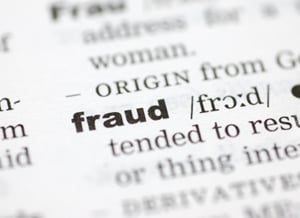
Where is all the bailout fraud?
 Neil Barofsky stepped down this week as the official watchdog for the $700 billion Troubled Asset Relief Program, a safety net for just about everyone during the financial crisis, from banks to car companies to homeowners. As the special inspector general for the Troubled Asset Relief Program (STIGTARP), Barofsky has done a great deal to highlight problems and pinpoint areas for improvement.
Neil Barofsky stepped down this week as the official watchdog for the $700 billion Troubled Asset Relief Program, a safety net for just about everyone during the financial crisis, from banks to car companies to homeowners. As the special inspector general for the Troubled Asset Relief Program (STIGTARP), Barofsky has done a great deal to highlight problems and pinpoint areas for improvement.
He has repeatedly criticized the U.S. Treasury, for example, for its handling of the TARP Home Affordable Modification Program, which failed to live up to its lofty goal of saving three million to four million households from foreclosure.
But in one respect, Barofsky takes a little too much credit.
He said in its last quarterly report to Congress in January that his organization had 142 ongoing criminal and civil investigations, resulting in 13 criminal fraud convictions.
But none of the law enforcement investigations described in the report relate to any taxpayer dollars stolen. Two of the companies mentioned, The Shmuckler Group and Residential Relief Foundation, were accused of swindling homeowners by promising to modify mortgages in exchange for fees. (The Home Affordable Modification Program does try to help struggling homeowners modify mortgages through their banks, but without any upfront fees for homeowners).
Another case is the prosecution of bank officers for Colonial Bank and mortgage lenders Taylor, Bean & Whitaker. Prosecutors believe Colonial Bank tried to obtain $550 million in TARP program money using fraudulent mortgages cooked up by officers at Taylor, Bean & Whitaker, according to The New York Times. (The case is ongoing). Again, no TARP money was obtained by the bank, but The New York Times says the case got started when STIGTARP became suspicious of the size of the bank’s TARP application.
In another case, Gordon Grigg, who is now serving a 10-year prison term, was convicted in Nashville, Tennessee, of stealing at least $6 million from investors. Grigg promised at least one investor he could invest in TARP-related debt, although no such investment opportunity exists. I was a reporter covering a press conference in Nashville in 2009 when Barofsky flew in from Washington, D.C. to join federal and local law enforcement officials announcing the charges against Grigg. It was advertised as the first TARP-related fraud case, and it got national media attention.
Again, no actual TARP money was involved.
Still, the law enforcement end of STIGTARP presses on. The watchdog agency has 45 armed officers and 27 vehicles equipped with lights and sirens, and recently asked Congress for additional money to upgrade vehicles, according to a recent CNBC story.
A spokeswoman for STIGTARP, Kris Belisle, confirmed that report and said the agency has been successful in stopping people from using TARP money fraudulently.
That may be the case. But after more than two years of TARP, it’s surprising the lack of fraud using taxpayer dollars disclosed so far by all these armed investigators. Is that because none exists, or is that because we haven’t found it?


